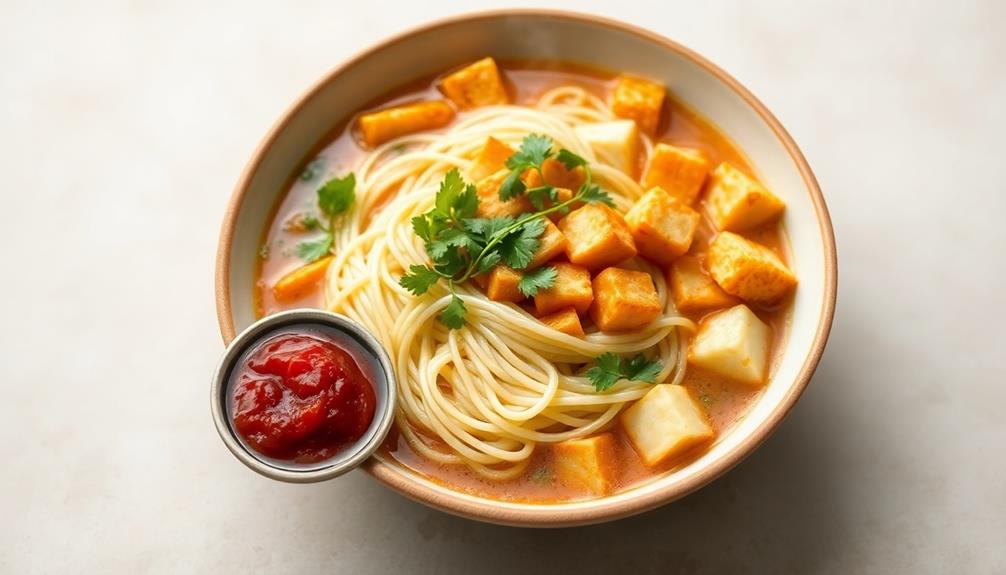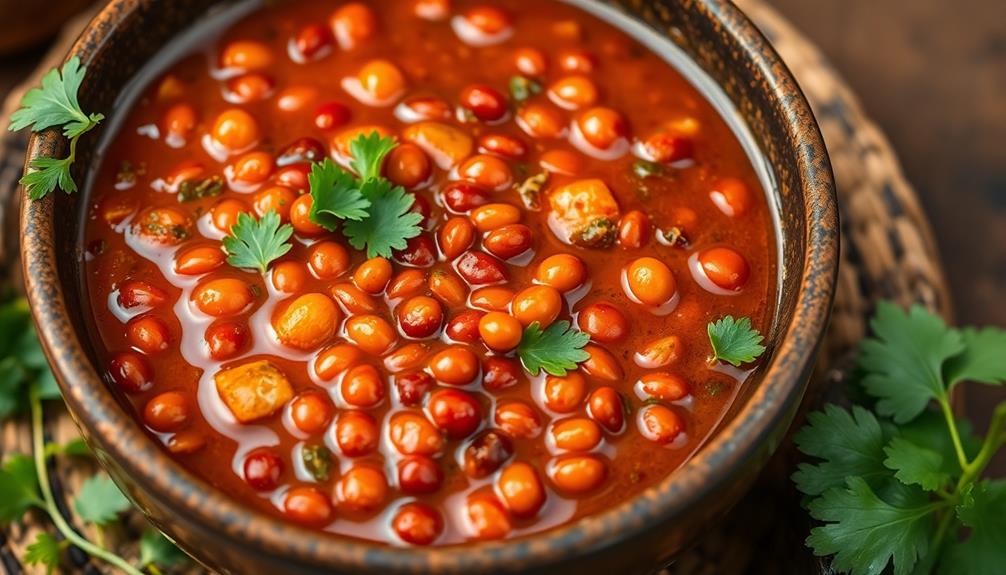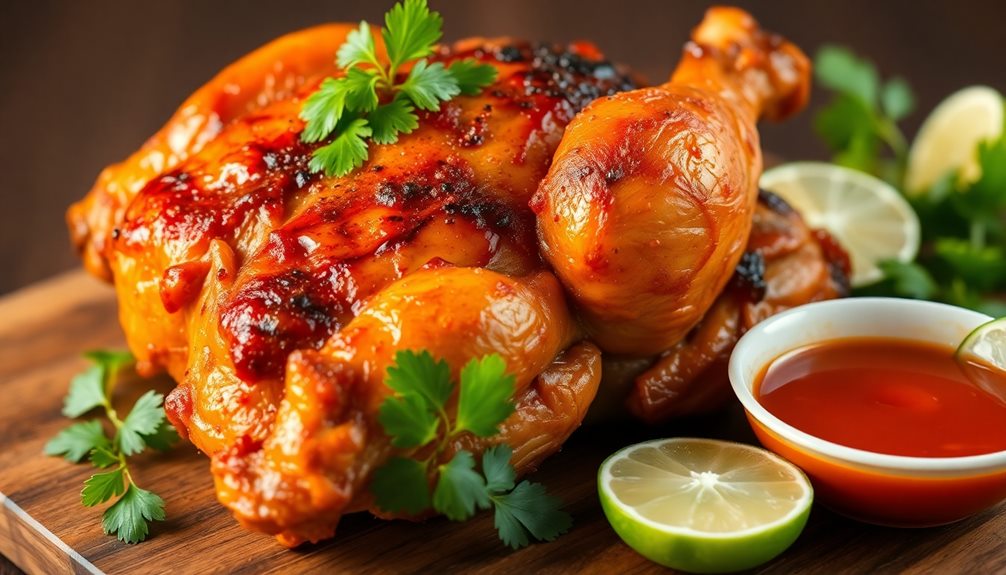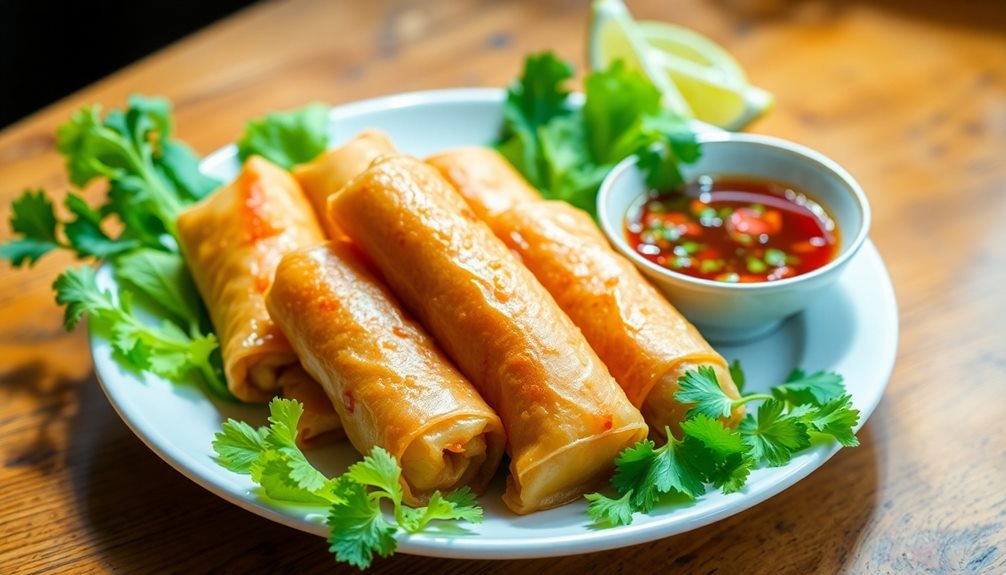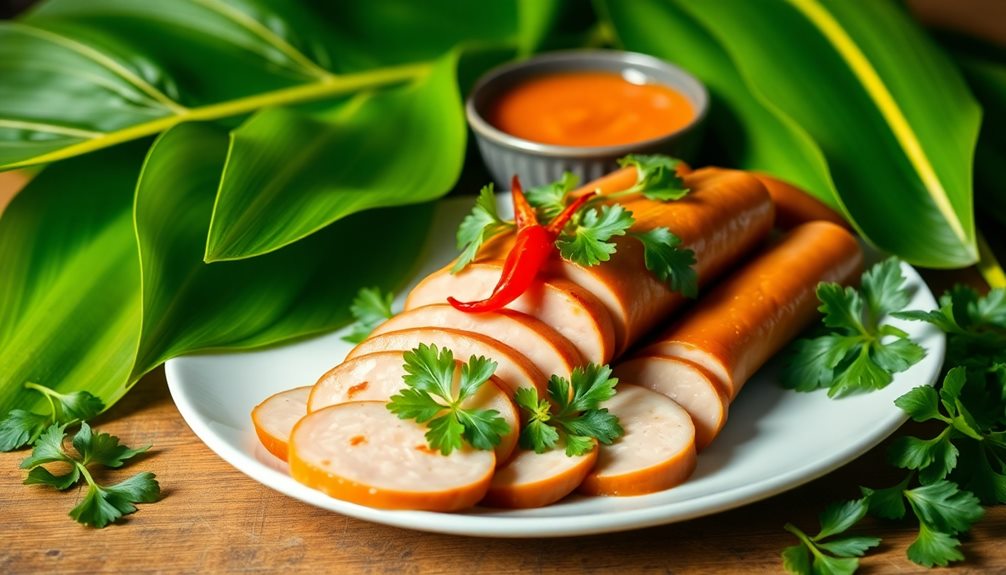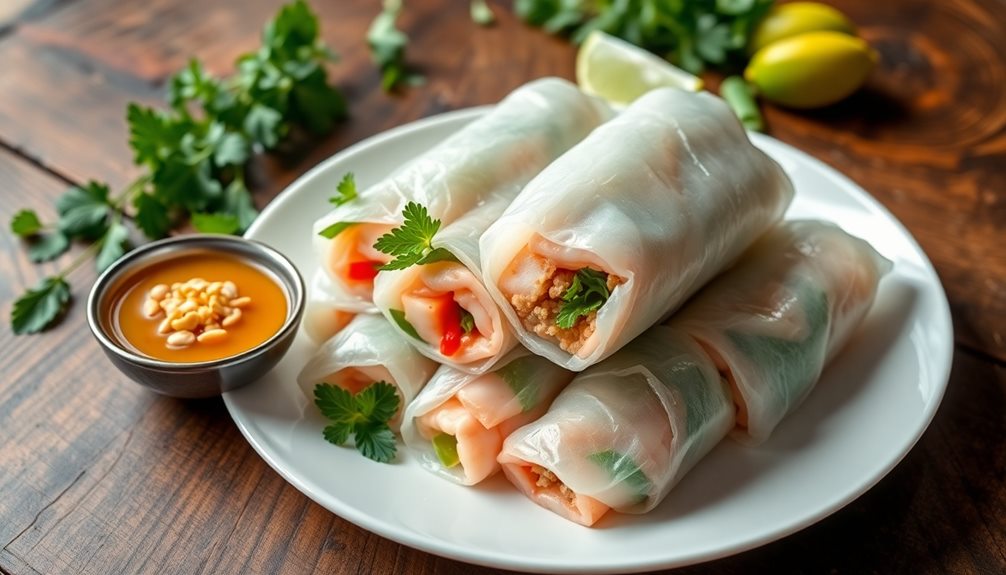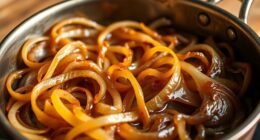Originating from Southeast Asia, noodles with tofu and shrimp paste offer a vibrant blend of flavors and textures you'll love. These chewy rice noodles, crisp fried tofu, and umami-packed shrimp paste come together in a delightful dish that's both satisfying and easy to make at home. Balancing spicy, tangy, and savory notes, it's a cherished part of Vietnamese culinary heritage. Simply soak the noodles, sauté the veggies, and toss everything together for a restaurant-quality meal. Plus, you can easily customize it with your favorite ingredients. Let's dive in and discover more about this tasty and versatile dish!
Key Takeaways
- Noodles With Tofu and Shrimp Paste is a Southeast Asian dish that combines chewy rice noodles, crisp fried tofu, and umami-packed shrimp paste.
- The dish offers a vibrant blend of flavors and textures, featuring tender tofu, bold umami notes from shrimp paste, and crisp vegetables.
- The recipe is versatile, allowing for customization with different vegetables or proteins, and is relatively easy to prepare at home.
- Noodles are a central component in many Vietnamese dishes, reflecting the tradition of sharing meals and the importance of fresh ingredients.
- The dish represents a cherished part of Southeast Asian culinary heritage, reflecting the region's rich culinary traditions and cultural significance.
History
The origins of this noodle dish can be traced back to the rich culinary traditions of Southeast Asia. For centuries, the people of this region have been crafting delectable dishes that blend vibrant flavors and unique ingredients.
Bun dau mam tom, or noodles with tofu and shrimp paste, is one such beloved classic that has been passed down through generations. The combination of chewy rice noodles, crisp fried tofu, and the pungent, umami-packed shrimp paste creates a truly memorable taste experience.
This dish likely emerged as a way for resourceful cooks to make the most of locally available ingredients, showcasing the ingenious culinary creativity of Southeast Asian cuisines. As the recipe spread across borders, it has evolved and adapted to regional preferences, with each culture adding its own distinctive twist.
Today, bun dau mam tom remains a cherished part of the culinary heritage of Southeast Asia, bringing families and communities together around the table to share in its rich history and delicious flavors.
Recipe
Noodles with Tofu and Shrimp Paste is a delightful dish that combines the savory flavors of tofu and shrimp paste with the comforting texture of noodles. This recipe is a perfect balance of spicy, tangy, and umami notes, making it a true delight for the senses.
The key to this dish is the careful preparation of the ingredients and the harmonious blend of flavors. By following the instructions carefully, you can create a restaurant-quality meal in the comfort of your own kitchen.
Ingredients:
- 8 oz dried rice noodles
- 1 block firm tofu, cubed
- 2 tbsp shrimp paste
- 2 cloves garlic, minced
- 1 inch ginger, grated
- 2 Thai chili peppers, sliced
- 1 onion, sliced
- 2 cups shredded cabbage
- 2 tbsp soy sauce
- 1 tbsp lime juice
- 2 tbsp vegetable oil
- Salt and pepper to taste
Instructions:
Soak the rice noodles in hot water for 15-20 minutes until pliable. Drain and set aside.
In a large skillet or wok, heat the vegetable oil over medium-high heat. Add the garlic, ginger, and Thai chili peppers, and sauté for 1-2 minutes until fragrant.
Add the onion and cabbage, and cook for 3-4 minutes, stirring occasionally, until the vegetables are tender.
Add the tofu, shrimp paste, soy sauce, and lime juice, and cook for an additional 2-3 minutes, stirring gently to combine.
Finally, add the soaked noodles and toss everything together until the noodles are heated through and coated with the sauce.
To ensure the best results, it's important to use a good quality shrimp paste and to adjust the heat level to your personal preferences by adding more or fewer chili peppers.
Additionally, feel free to experiment with different types of vegetables or proteins to create your own unique version of this delicious dish.
Cooking Steps
First, you'll need to soak the noodles in warm water to soften them up.
Next, prepare the tofu and shrimp paste – slice the tofu into small pieces and mix the shrimp paste with some seasonings.
Step 1. Soak Noodles in Warm Water
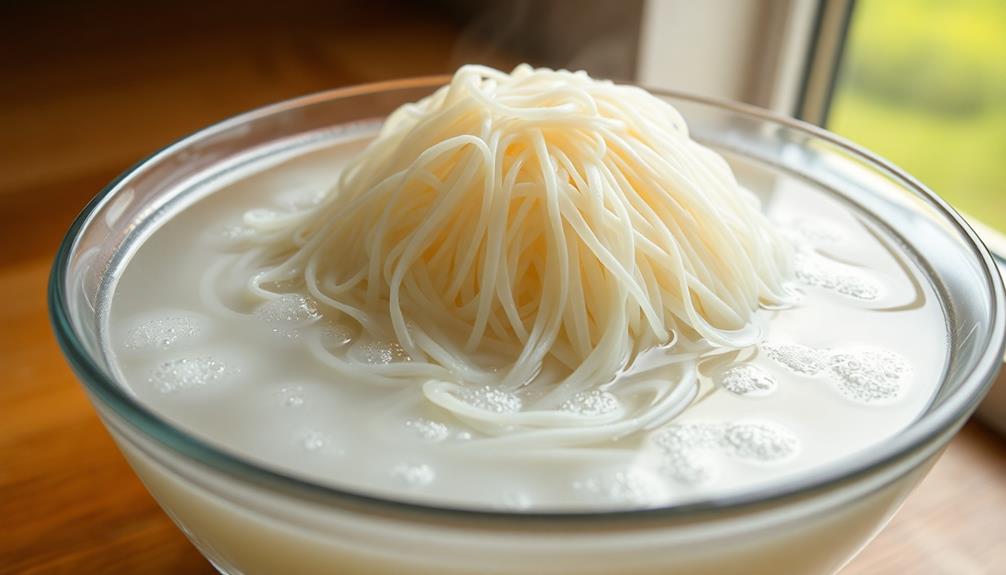
Soaking the noodles is a crucial first step in this recipe. You'll want to grab a large bowl and fill it with warm water.
Then, carefully add the dried rice noodles, making sure they're fully submerged. Let the noodles soak for 15-20 minutes, or until they become soft and pliable. As they soak, you might notice the water turning a light, milky color – that's totally normal!
Be patient and let the noodles do their thing. When the time's up, drain the noodles in a colander and give them a quick rinse with cool water. This will stop the cooking process and ensure your noodles have the perfect texture.
Now they're ready to be added to the rest of the dish! Get excited, because the delicious flavors of tofu and shrimp paste are just around the corner.
Step 2. Prepare Tofu and Shrimp Paste

With the noodles ready, turn your attention to prepping the remaining ingredients. First, you'll need to prepare the tofu. Grab a block of firm or extra-firm tofu and slice it into bite-sized cubes. Rinse the tofu under cool water to remove any excess moisture, then pat it dry with paper towels.
Next, it's time to tackle the shrimp paste. This pungent sauce adds a delightful umami flavor to the dish. Scoop out a tablespoon or two of the shrimp paste and place it in a small bowl. Add a splash of water and stir to create a smooth, pourable consistency. Don't be afraid of that strong aroma – it'll blend beautifully with the other flavors!
Now you're ready to start cooking. Heat a large skillet or wok over medium-high heat. Add the tofu cubes and let them sizzle until golden brown on all sides.
Then, pour in the shrimp paste mixture and stir everything together. The tofu will soak up all that savory goodness. Get ready for an explosion of flavor in every bite!
Step 3. Slice Tofu Into Small Pieces
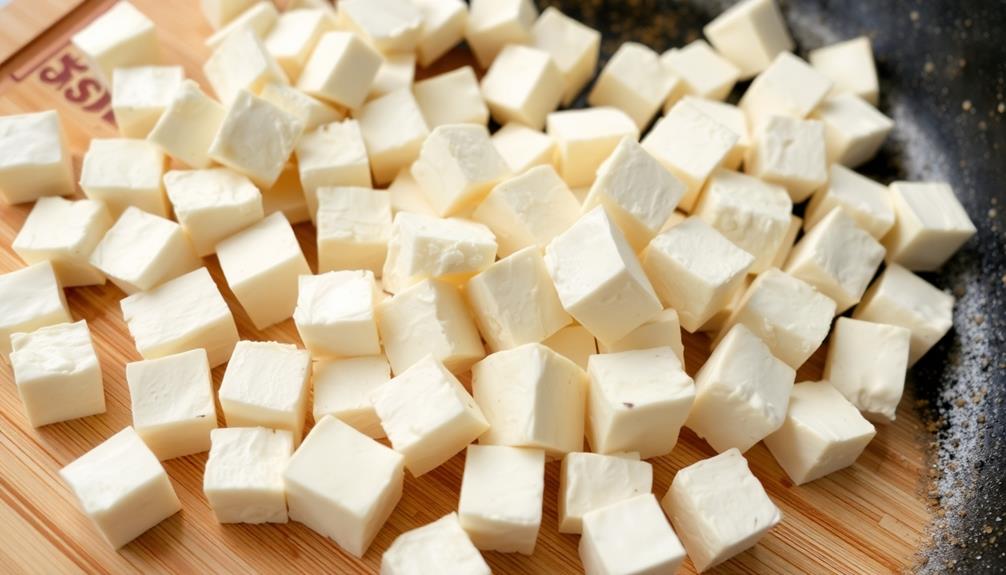
Typically, you'll want to slice the firm or extra-firm tofu into bite-sized cubes. Grab the block of tofu and use a sharp knife to carefully cut it into small, even pieces about 1/2-inch thick. This will help the tofu cook evenly and soak up all the delicious flavors.
Don't worry if some of the pieces are a little uneven – that's all part of the homemade charm!
As you slice, keep an eye out for any soft or crumbly spots on the tofu. Try to avoid those areas and focus on the firmer, more solid parts. The tofu should have a nice, sturdy texture that can stand up to the bold flavors of the shrimp paste.
Once you've cut the entire block into cubes, you're ready to move on to the next step. Get ready for your taste buds to be tantalized by the tasty combination of tofu and shrimp paste!
Step 4. Mix Shrimp Paste and Seasonings
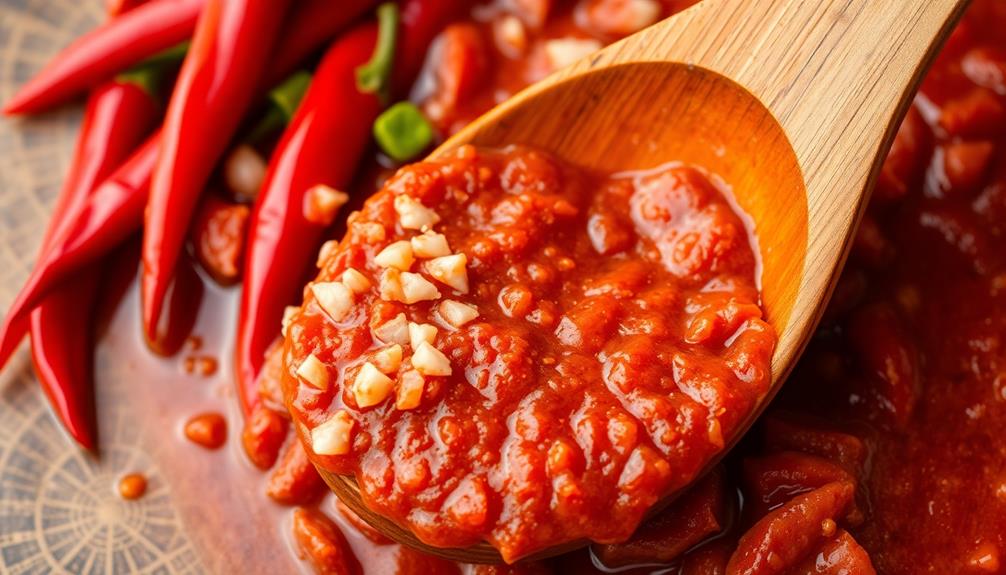
Next, grab the shrimp paste and mix it together with your desired seasonings.
You'll want to give it a good stir to make sure all the flavors meld together nicely. The shrimp paste has a wonderfully pungent aroma that'll have your mouth watering in no time!
Start by adding a pinch of salt and a sprinkle of black pepper. Yum, can you just smell those savory scents wafting through the air?
Next, don't be shy – go ahead and add a dash of soy sauce. The saltiness from the soy sauce will complement the shrimp paste perfectly.
Stir it all up until it's well combined. If you want to kick up the heat a notch, try stirring in a teaspoon or two of chili powder or crushed red pepper flakes.
Just be careful not to overdo it!
Step 5. Combine All Ingredients in a Bowl
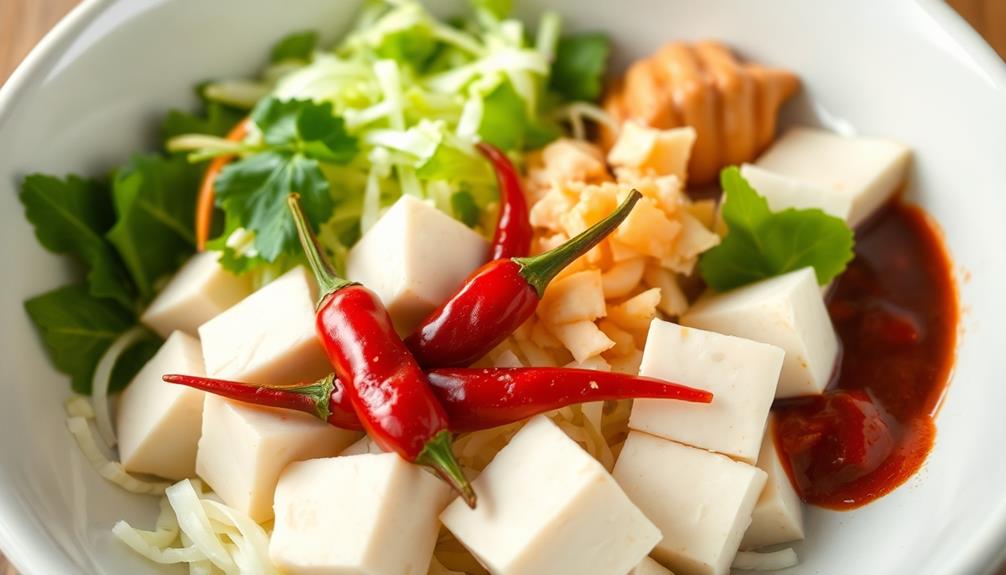
Now that you've mixed the aromatic shrimp paste with the perfect blend of seasonings, it's time to bring everything together. In a large bowl, add the cooked rice noodles, crisp fried tofu, and the savory shrimp paste mixture you prepared earlier. Give it all a good stir, making sure the noodles are evenly coated. The aromas will start to fill the air, making your mouth water in anticipation.
To enhance the nutritional value of your dish, consider adding a sprinkle of chia seeds, as they're a rich source of dietary fiber, aiding digestion and regularity digestive health benefits.
Next, toss in a handful of fresh mint leaves and crunchy bean sprouts. Their bright, refreshing flavors will balance out the bold shrimp paste. Don't forget to squeeze in a generous amount of fresh lime juice – the tangy citrus will really make all the flavors pop. Give the whole thing another gentle toss, and you're ready to serve!
Grab a big bowl and pile high with the fragrant noodle dish. Top it off with a few extra mint leaves and a sprinkle of crushed peanuts for that perfect finishing touch. Time to dig in and enjoy this colorful and flavorful Vietnamese delight! If you’re feeling adventurous, try making this dish at home with our authentic Vietnamese street food recipe. The combination of fresh herbs, savory broth, and tender noodles is sure to transport your taste buds to the bustling streets of Hanoi. Don’t forget to pair it with a refreshing iced Vietnamese coffee for the ultimate culinary experience.
Final Thoughts
This noodle dish, with its vibrant blend of flavors and textures, is a delightful culinary adventure. The combination of tender tofu, succulent shrimp, and the bold umami notes from the shrimp paste creates a symphony of tastes that will delight your senses.
The soft, slippery noodles provide a satisfying base, while the crisp vegetables add a refreshing crunch. As you take each bite, you'll be transported to the bustling streets of Vietnam, where this dish is a beloved classic.
The best part? This recipe is surprisingly easy to make at home, allowing you to enjoy the authentic flavors without the hassle of dining out.
With a few simple ingredients and a bit of prep work, you can whip up this noodle masterpiece in no time. So why not give it a try? Gather your loved ones, set the table, and get ready to embark on a flavorful journey that will leave you craving more.
Frequently Asked Questions
Is Bun Dau Mam Tom Suitable for Vegetarians?
No, it wouldn't be suitable for vegetarians. The dish typically contains shrimp paste, which is an animal-based ingredient. As a vegetarian, you'd need to find a vegetarian-friendly alternative that doesn't use any animal products.
How Long Can Bun Dau Mam Tom Be Stored?
How long can the dish be stored? It really depends on the ingredients used and how it's prepared. Generally, you can store it in the fridge for 3-4 days or freeze it for up to 3 months.
Can I Use a Different Type of Noodle?
You can certainly use a different type of noodle. As long as the texture and cooking time of the alternative noodle work well, it'll make for a tasty dish. Feel free to experiment and find your favorite combination.
What Is the Best Way to Reheat Bun Dau Mam Tom?
The best way to reheat your dish is to steam it or gently warm it in a skillet with a splash of broth or water. This will help preserve the texture and prevent it from drying out.
Is Bun Dau Mam Tom Gluten-Free?
Yes, the dish is gluten-free. Rice noodles, which are the main ingredient, don't contain any gluten. However, you'll want to double-check that the other ingredients like the shrimp paste don't have any hidden gluten sources.
